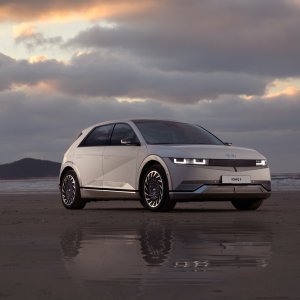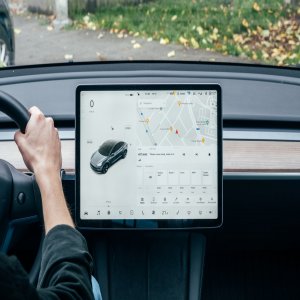
Infotainment Technology to Change OEMs’ Business Model
 By Antonio Gozain | Senior Journalist and Industry Analyst -
Fri, 06/10/2022 - 09:00
By Antonio Gozain | Senior Journalist and Industry Analyst -
Fri, 06/10/2022 - 09:00
While OEMs continue pushing their ambitious transition from car manufacturers to mobility providers, in-vehicle infotainment systems and digital dashboards have emerged as a new profit opportunity, with over-the-air updates and platform innovations that are contributing to change OEMs’ business models.
Infotainment systems are designed to provide information and entertainment to drivers and passengers, offering navigation, music, phone and even videogaming solutions either through OEM in-house developments or through partnerships with tech providers. These are poised to transform how users view vehicles and the bases on which OEMs build their offering. One example is General Motors, which in 3Q21 announced its new end-to-end software platform Ultifi, which will be featured in its vehicles starting in 2023. The platform will offer in-car subscription services, over-the-air updates and will transform the company “from an automaker to a platform innovator,” said Scott Miller, Vice President of Software-Defined Vehicles, GM. “It is a big step in our software strategy. Today’s cars are enabled by software. With Ultifi, they are going to be defined by it.”
In January 2022, Qualcomm Corp announced deals to supply infotainment chips to Volvo Group, Honda Motor and Renault. “With Qualcomm’s technology in our forthcoming fully electric SUV, we are confident our infotainment system will reach the next level,” said Henrik Green, Chief Product Officer, Volvo Cars.
While more details on new infotainment systems from brands like Volvo or Honda are yet to become available, GM has said Ultifi will give owners greater access to all the car’s functions, from weather apps to more complex features such as in-car cameras for facial recognition or to detect children and automatically trigger the vehicle’s child locks. This system will also give drivers access to subscription services such as Super Cruise, which is GM’s hands-free advanced driver assistance system.
Thanks to these new platform model, GM will generate revenue long after a vehicle is sold through over-the-air upgrades, a business model introduced by Tesla. Most of the cars available three years ago used to run the same software until the end of their useful life and the only way to upgrade those systems was buying a new car. However, OEMs recently started offering over-the-air upgrades, following Tesla’s model, similar to the upgrades offered on smartphones.
In Mexico, most systems are still only upgradeable if the user takes the vehicle to a dealership for a system overhaul or by using a USB drive. GM’s OnStar connectivity platform, for example, has 16 million vehicles connected in the US, with software and services generating US$2 billion in annual revenue. While the business is already profitable, there is still untapped potential. “GM projects annual software and services revenue opportunities between US$20 billion and US$25 billion from a projected 30 million connected vehicles by the end of the decade,” the company said.
Technology Toward CASE Mobility
Electronic developments have been possible thanks to technology from non-automotive companies. Originally known for its mobile phone chips, Qualcomm has recently entered the automotive industry with several offerings ranging from self-driving car brains to chips that operate infotainment systems and digital dashboards.
Several other companies have also began exploring the auto sector. Beyond individual efforts, in 2021, CARIAD, BASELABS, CoreAVI, DENSO, Five, Faunhofer IESE, NXP, the Swedish Royal Institute of Technology, TTTech Auto, Audi and Volkswagen partnered under the name of The Autonomous to develop state-of-the-art technology aiming to boost the transition toward autonomous vehicles. “This cross-industry collaboration marks the starting point for a change of mindset in the industry and for further partnerships that will help overcome major hurdles amid the prevailing competition,” said Ricky Hudi, Chairman, The Autonomous.
“The development of truly automated driving will be better mastered by joint forces of car manufacturers, Tier 1 suppliers, tech and research companies. Therefore, a pre-competitive environment is necessary to develop safe technology beyond borders. Through this, we create the basis for sustainable customer trust, including best practices and cross-industry standards,” said Hudi.
Increased Privacy, Security Concerns
The growth of infotainment technology and digital dashboards has raised privacy concerns, however. Automakers do not only collect data on vehicles but also on the people driving them and even passengers. While this data could be useful for certain purposes, it can also fall into the wrong hands when people sell their cars or return them and in the case of use through rental, leasing or subscription models.
The situation becomes even more complex with autonomous vehicles, which generate, collect, analyze and store immense amounts of data. Privacy implications of data collection and use in vehicles must be addressed to protect consumers, according to the Santa Clara Law Review. In addition, a survey published by GeekWire back in 2017 already showed that US consumers in 2017 were worried about their cars getting viruses or being hacked. Thirty-three percent of consumers classified vehicle hacking as a serious problem, while 58 percent did not think automakers could develop a permanent solution to vehicle hacking. In 2021, the Cyber Survey, carried out by insurance company HSB, found out that 37 percent of respondents were somewhat or very concerned about the cybersecurity and safety of connected cars. Meanwhile, 35 percent expressed their fear that a virus or any cyber-attack could destroy their vehicle’s data.











